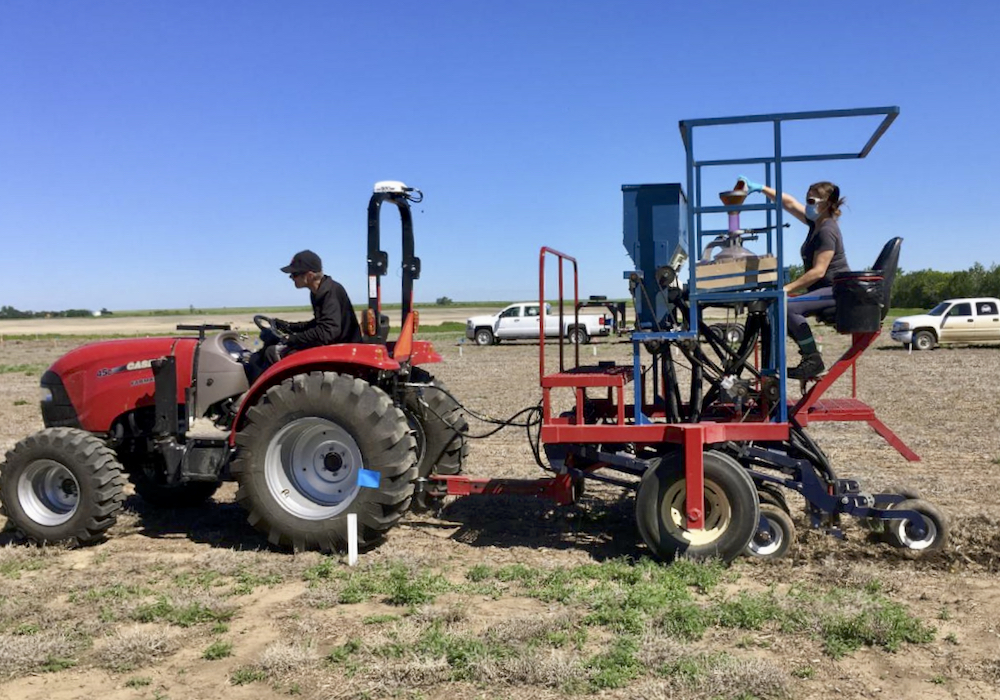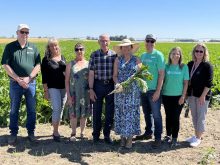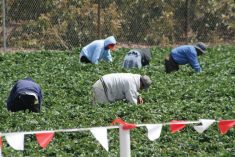A producer-led investment is helping an east-central Alberta research farm realize the full potential of its localized research.
The Chinook Applied Research Association (CARA) in Oyen has bought a plot combine, tractor, pickup truck, GPS unit, cargo trailer and a mower tractor with $267,000 from the Western Grains Research Foundation (WGRF).
This funding is key to CARA’s goal of providing in-depth research for producers in the province’s Special Areas and MD of Acadia, says a CARA crop agronomist.
Read Also
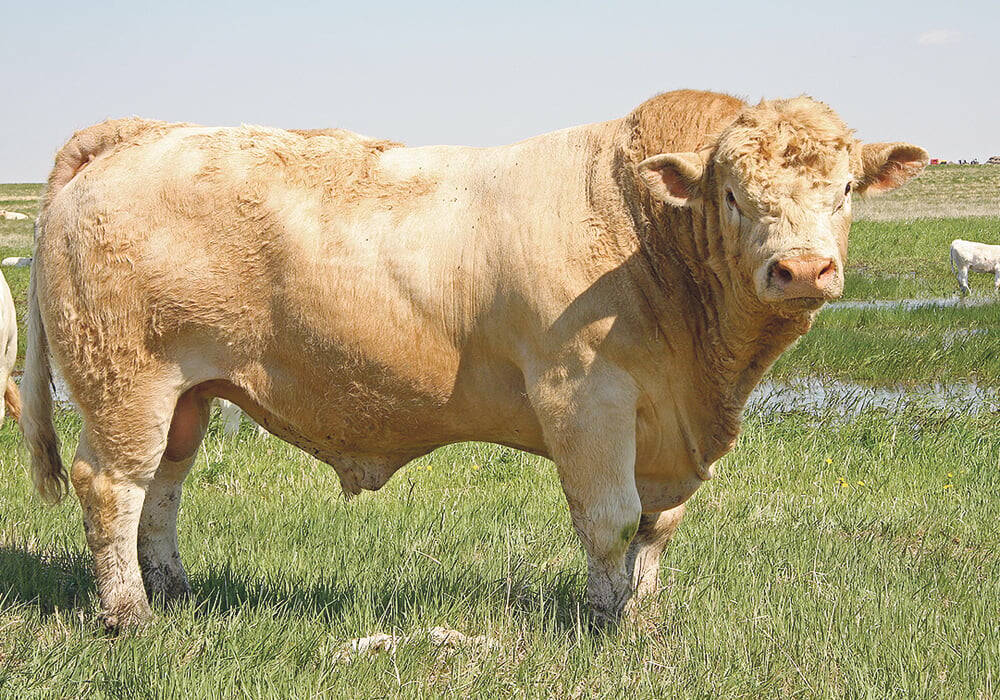
New research sheds light on infertility in bulls
Southern Alberta researchers make ground-breaking discovery in sperm function examining male infertility in bovines.
“A lot of the equipment that we were running was getting to be out of date and worn out so I think it was necessary to get newer research equipment in the area,” wrote Braeden Peers in a news release.
“When farmers are rotating out their equipment every five to 10 years, and CARA isn’t, our data becomes a lot less relevant.”
The new equipment has enhanced the overall efficiency and quality of the association’s small-plot adaptive research trials, wrote Dianne Westerlund, CARA manager and forage agronomist.
The funding has also indirectly allowed CARA to grow its team by 1.5 field technicians and two to three summer technicians.
“The equipment funding also freed up some budget so we have the flexibility to add more technicians and take on more trials,” wrote Westerlund.
The association’s volume of plot work has increased by 25 per cent in the last five years, which Westerlund credits largely to the newer equipment.
CARA was established in 1979 by a group of local producers who felt the information available from agricultural research at the time did not pertain to the semi-arid area of east-central Alberta.
“The Special Areas and MD of Acadia — with approximately five million acres — lie within the semi-arid, brown soil zone of the Palliser Triangle — conditions which were not dealt with by existing research,” wrote Westerlund in a follow-up email.
“Our soils are also marked by areas of salinity and solonetzic qualities which make crop production challenging. Roughly one-third of our area is native range. Soil and water conservation are always a consideration.”
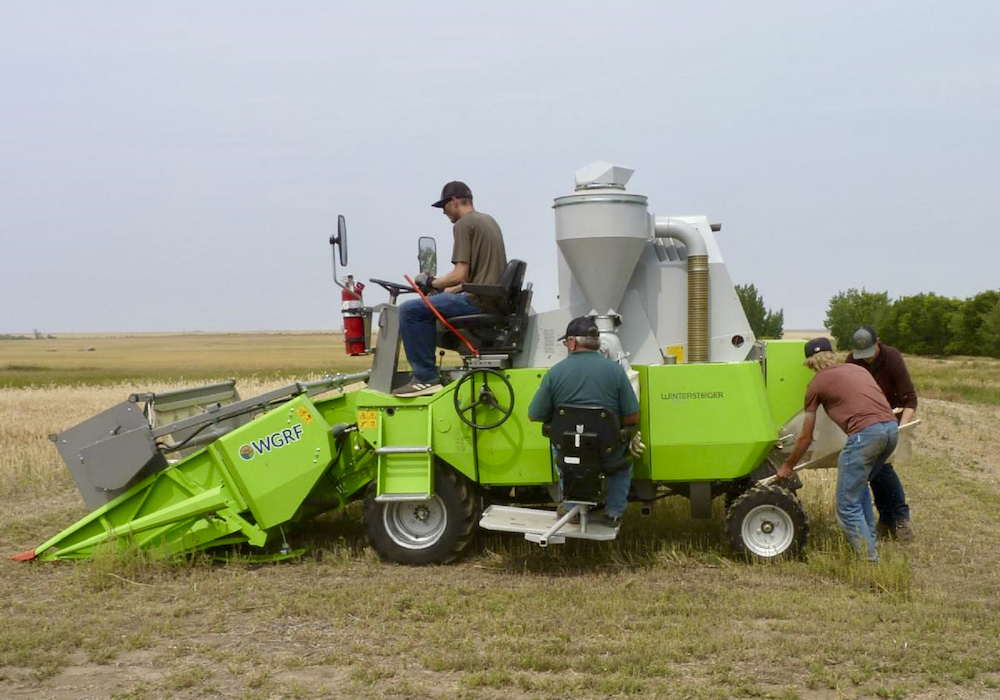
Ultimately, CARA is research by east-central Albertans for east-central Albertans, wrote Westerlund.
“We take varieties and agronomic practices that have been developed in a research situation and evaluate them in the conditions of east-central Alberta, and then adapt the technology so that it adds value to local producers.”
According to Westerlund, CARA was the first broad applied-research association in the province, specializing in crops, forage and conservation (she points out there were already a couple of forage extension-focused producer organizations in the province at the time).
Since its inception 45 years ago, CARA has evolved, expanding from one program co-ordinator leading field trials to the present day when it employs seven full-time staff and eight part-time or seasonal staff.
Its small-plot trials include research in annual crops (including varieties and agronomics), field demos, perennial forages (varieties and agronomics), grazing, conservation initiatives and more.
This is all for the benefit of local producers, wrote Westerlund.
“A big part of what we do involves sharing and delivering information to local producers, using field trials, demonstrations, reports, newsletters, seminars, field days, crop walks, website, etc.”
CARA has also established a soil health initiative that includes the Western Canada Soil Health Lab. Westerlund says it has the capacity to analyze a number of soil health parameters under the guidance of soil scientist Yamily Zavala.
“Yamily and staff have processed over 8,000 samples during the past few years,” she says.
CARA receives core funding from the Province through Results Driven Agriculture Research (RDAR), the Special Areas board and the MD of Acadia
Project-specific funding comes primarily through government grants or private industry for custom research.Most projects are a partnership with other associations, Ag Canada or industry specialists, colleges, universities, local ag service boards, ag societies, agri-business and others.
The WGRF is a farmer-funded and -directed non-profit organization investing in agricultural research benefiting western Canadian producers. The funding for CARA came from its Accelerating Capacity Initiative, a $32 million fund dedicated to expanding crop research capacity.


